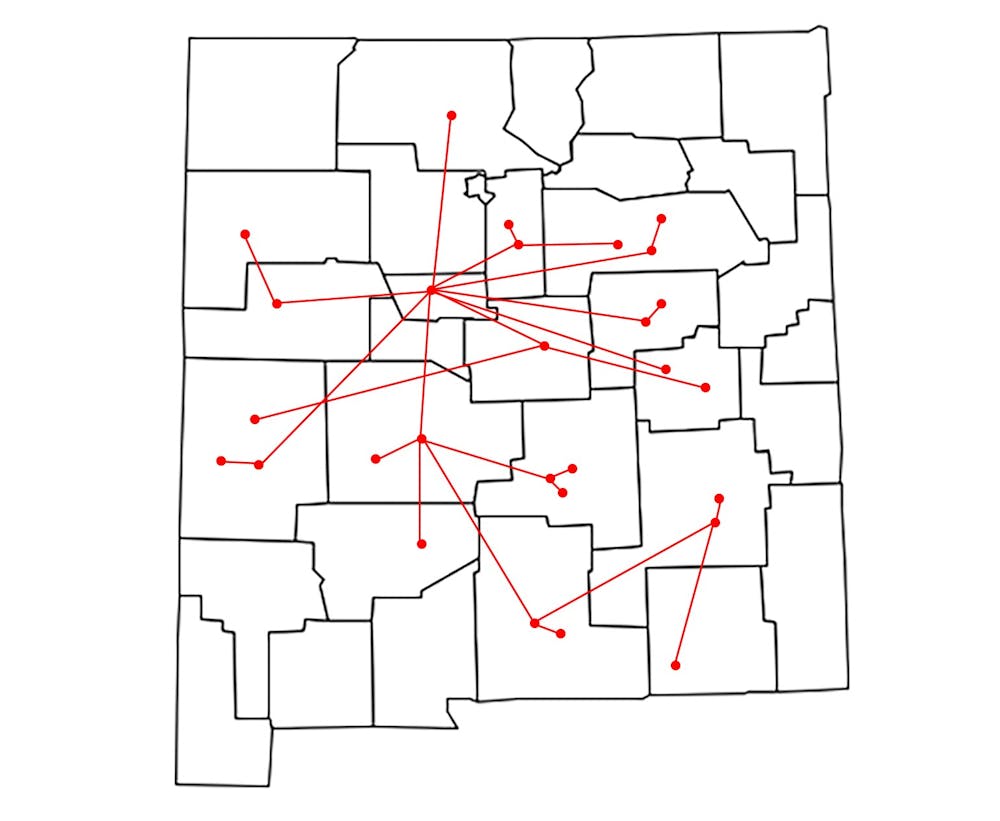A University of New Mexico student received a phone call from the New Mexico Department of Health (NMDOH) late one Wednesday evening. The department was calling to tell her she had tested positive for COVID-19.
“I was so shocked when I found out,” she said, “but talking to the contact tracer eased my worries.”
Contract tracers play an important role in combating the coronavirus. When a person tests positive for the virus, contract tracers call and inform them of their test result, which begins the case investigation.
They ask whether the person is presenting COVID-19 symptoms, how severe they are and how long they’ve been present.
Contract tracers also find out where that person has been and who they’ve recently been in contact with, and inform those contacts that they may have been exposed to the virus. They then inquire about the contacts’ health and provide the opportunity for them to be tested.
By informing people of their potential exposure and encouraging them to quarantine, contact tracers help slow COVID-19 transmission.
From the beginning of the pandemic, New Mexico has displayed one of the highest testing rates per capita in the country. Since Sept. 1, the state has reported nearly 100,000 test results, including just over 2,000 new confirmed cases.
Contact tracers in the state aim to reach out to individuals who test positive within 36 hours of receiving the test result. This large operation requires hundreds of contact tracers who make calls around the clock.
NMDOH spokesperson David Morgan said that there are approximately 270 full-time contact tracers, which doesn’t meet the estimated need for the population of New Mexico, according to an NPR report.
When the state’s COVID-19 case growth peaked in late July, understaffed workers were constantly on the phone. Now contact tracers are unsure how they’ll handle the upcoming flu season coupled with COVID-19 — a concern exacerbated by the difficulty contact tracers often have in contacting people who test positive.
“We have a 50-50 chance for an individual to pick up the first time we call, the second time a 70% chance and the third time, if it comes to it, an 85% chance,” Morgan said.
Some people are unreachable because they didn’t provide accurate contact information when they got tested, forcing contact tracers to use other means to try to reach them.
Get content from The Daily Lobo delivered to your inbox
The majority of people contacted are open to providing information about who they were in contact with, Morgan said. Even so, relying on people to have an accurate memory and be truthful about where they’ve been can sometimes pose issues.
“I lied and said I got it from where I worked, because the person I got it from doesn’t have papers,” the UNM student said.
With people who frequently interact with others, it can be challenging to pinpoint where they may have contracted the virus. Sometimes people attended parties where social distancing guidelines were not followed, making it difficult to contact all of the attendees.
Under the Health Insurance Portability and Accountability Act, healthcare workers are legally prohibited from disclosing any private medical information to others, meaning individuals can feel safe when sharing where they’ve gone and who they’ve seen. For example, Morgan said that the department won’t report things like mask noncompliance.
The NMDOH offers support services to people who test positive, including hotel rooms for people who would be financially unable to safely quarantine otherwise.
“Our primary concern is to make sure that you are physically well,” Morgan said.
Contact tracing is vital in ensuring New Mexico’s hospitals aren’t overwhelmed by high rates of COVID-19 transmission, Morgan said.
“The more people that require healthcare resources (such as ventilators and intensive care unit beds), the more strain we put on the health care system. That is why it is important to limit the potential for exposure,” Morgan said.
The UNM student interviewed by the Daily Lobo said that after speaking with a contact tracer, her concerns were lessened and she was more informed.
“After talking to the contact tracer, I felt so much better,” she said. “I now know what to do and how to handle the situation.”
As of the publication of this article, 41 students, faculty and staff at UNM have tested positive for COVID-19.
Nikita Jaiswal is a freelance reporter at the Daily Lobo. She can be contacted at news@dailylobo.com or on Twitter @DailyLobo






